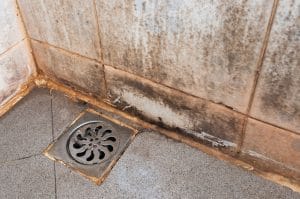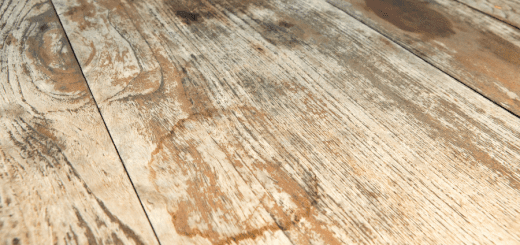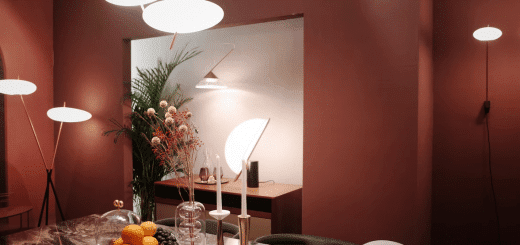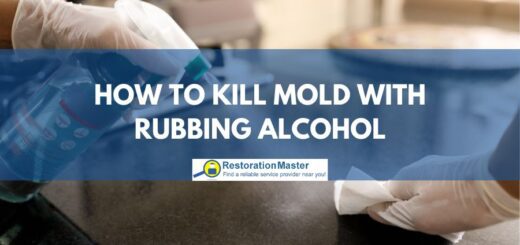Everyday Activities That Lead to Mold Growth
All of the following include daily activities that leadLead is a heavy metal that can be toxic to humans, especiall... More to moldMold is a type of fungus that grows in damp or humid conditi... More growth:
- Showers with too much steam
- Wearing shoes around the house
- Leaving the windows open
What is MoldMold is a type of fungus that grows in damp or humid conditi... More?
MoldMold is a type of fungus that grows in damp or humid conditi... More is a type of fungus that contains small organisms that can be found almost anywhere. They can come in a variety of colors, including white, orange, green, purple, or black. While it can cause significant damage to homes and buildings, moldMold is a type of fungus that grows in damp or humid conditi... More plays an important role in our natural environment when it comes to decomposing dead leaves and plants. But it can also trigger a lot of health issues if not addressed in the home.
When Is MoldMold is a type of fungus that grows in damp or humid conditi... More Growth Dangerous?

Contacting moldMold is a type of fungus that grows in damp or humid conditi... More sporesSpores are microscopic reproductive units of fungi or mold t... More on a daily baisis can leadLead is a heavy metal that can be toxic to humans, especiall... More to breathing issues or allergies.
As all types of moldMold is a type of fungus that grows in damp or humid conditi... More require moisture to survive, they disperse tiny sporesSpores are microscopic reproductive units of fungi or mold t... More into the breathing air. You may not notice, but you come into contact with these sporesSpores are microscopic reproductive units of fungi or mold t... More on a daily basis. However, it’s when there is a large moldMold is a type of fungus that grows in damp or humid conditi... More colony present in the home that you will experience allergies and breathing issues. As the colony disperses large amounts of sporesSpores are microscopic reproductive units of fungi or mold t... More, moldMold is a type of fungus that grows in damp or humid conditi... More sporesSpores are microscopic reproductive units of fungi or mold t... More can be inhaled and cause severe health effects.
Note that not everyone will be affected when inhaling moldMold is a type of fungus that grows in damp or humid conditi... More sporesSpores are microscopic reproductive units of fungi or mold t... More of large quantities; only those who are allergic will experience the reaction. Thankfully, molds can be easily identified, such as white or black patches or orange film in moist areas like the kitchen and bathroom.
Even if you are not allergic to moldMold is a type of fungus that grows in damp or humid conditi... More, you may notice skin, eyes, nose, and/or throat irritation when inhaling the sporesSpores are microscopic reproductive units of fungi or mold t... More. But regardless of whether you are experiencing health issues, it is highly recommended to call a mold remediation professional to address the problem.
The following are daily habits that leadLead is a heavy metal that can be toxic to humans, especiall... More to moldMold is a type of fungus that grows in damp or humid conditi... More growth:
Showers with too much steam
Having a lot of steam in the shower can be very relaxing, but this can also promote moldMold is a type of fungus that grows in damp or humid conditi... More growth, triggering allergies and breathing issues. As moldMold is a type of fungus that grows in damp or humid conditi... More survives in warm, moist areas, the bathroom shower is the perfect place for it to grow quickly.
Wearing shoes around the house
It’s common for many people to wear their shoes around the house, but doing this also tracks in everything from outside, including moldMold is a type of fungus that grows in damp or humid conditi... More sporesSpores are microscopic reproductive units of fungi or mold t... More. After the sporesSpores are microscopic reproductive units of fungi or mold t... More are tracked in, they can latch themselves to porousPorous describes a material that contains small openings or ... More building materials like drywall, carpeting, and ceiling tile. From here, they will only require moisture to quickly spread to other areas.
Leaving the windows open
It’s nice to let some fresh air in the home every now and then, especially in the morning, but you should be careful how long the windows are left open. Doing this allows floating sporesSpores are microscopic reproductive units of fungi or mold t... More to come in and plant themselves around the windowsills or even in areas further inside your home.
Where Else Can MoldMold is a type of fungus that grows in damp or humid conditi... More Grow?

MoldMold is a type of fungus that grows in damp or humid conditi... More survives in warm, moist areas. The bathroom shower is a perfect place for it to grow quickly.
MoldMold is a type of fungus that grows in damp or humid conditi... More can grow in any area where there is moisture in your home. Everything from windows, bathrooms, air ducts, kitchens, basements, attics, crawlspaces, the list goes on, can provide moldMold is a type of fungus that grows in damp or humid conditi... More sporesSpores are microscopic reproductive units of fungi or mold t... More with moisture. You should be aware that moldMold is a type of fungus that grows in damp or humid conditi... More is most common in areas that are dark and damp, such as the basement, crawlspace, and attic.
Common health issues from moldMold is a type of fungus that grows in damp or humid conditi... More include allergies and cold symptoms, but others like ear infections and asthma can be triggered with compromised immune systems.
To prevent mold from growing, it’s important to repairRepair is the act of fixing or restoring damaged property, m... More any leaks or fans that clear moisture from the area. It’s also a good idea to avoid laying down carpeting in bathrooms, kitchens, basements, and other areas that are susceptible to accumulated moisture.
MoldMold is a type of fungus that grows in damp or humid conditi... More and Structural Damage
In addition to triggering allergies, breathing issues, and even long-term health effects, moldMold is a type of fungus that grows in damp or humid conditi... More can cause severe structural damage on the building materials on which they grow. When given an adequate source of moisture and organic food source containing cellulose, a common ingredient found in all homes and properties, the fungus will eat away at the building materials.
Areas including basements, crawlspaces, attics, and other areas with rich moisture sources face the highest risk of structural damage from moldMold is a type of fungus that grows in damp or humid conditi... More. It’s important to inspect these areas frequently or conduct moldMold is a type of fungus that grows in damp or humid conditi... More inspections on a regular basis.
You should also be aware that the wood used in home renovations or during building processes is not always dry when installed. Make sure that construction projects never involve damaged materials.
Finding MoldMold is a type of fungus that grows in damp or humid conditi... More on Your Property
As there are many ways that moldMold is a type of fungus that grows in damp or humid conditi... More can develop on your property, regardless of how it happened, it’s important to have it removed immediately. While some property owners attempt to remediate the moldMold is a type of fungus that grows in damp or humid conditi... More themselves, others choose to hire mold removal and remediation professionals. In fact, it’s always recommended to work with restorationRestoration is the process of returning a property to its pr... More professionals as they use professional products and processes in order to remove the fungus at its source.
When attempting a DIY mold removal project, you may not completely remove the moldMold is a type of fungus that grows in damp or humid conditi... More or the moisture source, leaving sporesSpores are microscopic reproductive units of fungi or mold t... More deeply embedded in the floors and allowing the moldMold is a type of fungus that grows in damp or humid conditi... More to return in the future. Home and building owners always face this risk when trying to remove the fungus themselves.
Hire a Mold RemediationMold remediation is the process of identifying, removing, an... More Professional
When working with a professional, you can be sure that the moldMold is a type of fungus that grows in damp or humid conditi... More will not return in the future as their products are designed to remove moldMold is a type of fungus that grows in damp or humid conditi... More completely. Mold removal professionals are quick to identify problem areas and will know how to remove the moisture source as well as repairRepair is the act of fixing or restoring damaged property, m... More the affected area, removing damaged porousPorous describes a material that contains small openings or ... More materials and installing replacements.
They will also set up containment chambers and wear personal protective equipment (PPE)Personal protection equipment (PPE) is safety gear such as g... More to prevent the moldMold is a type of fungus that grows in damp or humid conditi... More from spreading and to protect their health during the process. After the moldMold is a type of fungus that grows in damp or humid conditi... More has been completely removed from the affected area, they will work with your insurance provider during the claims process to make matters easier for you.












